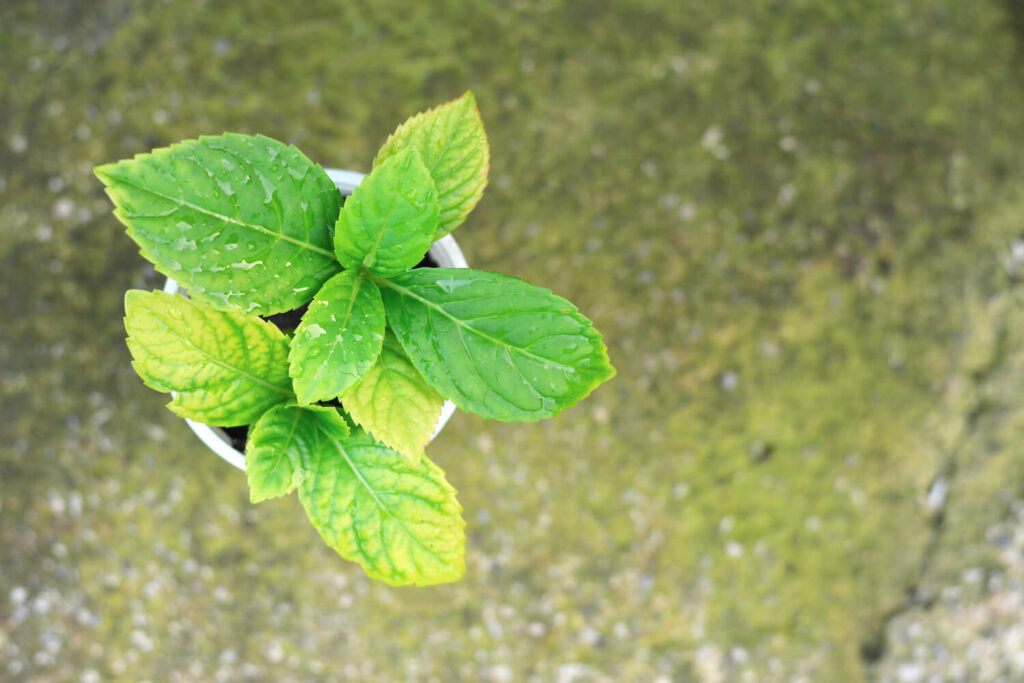An Unbiased View of Hydrangea Leaves Turning Yellow
Wiki Article
The 7-Second Trick For Hydrangea Leaves Turning Yellow
Table of ContentsSome Ideas on Hydrangea Leaves Turning Yellow You Should KnowThe 10-Second Trick For Hydrangea Leaves Turning YellowNot known Facts About Hydrangea Leaves Turning YellowThe Single Strategy To Use For Hydrangea Leaves Turning Yellow
One possibility is that the plant is not obtaining sufficient sunshine. Throughout the cold weather, the days are shorter, and the sun is not as intense, so make certain to put your Hydrangea in an area where it will get at least six hours of sunshine every day. One more factor for Hydrangea yellow fallen leaves in winter can be also much water.The leaves may be turning yellow due to temperature stress. Hydrangeas like cooler temperature levels, so if the plant is in a spot that obtains also warm or too cool, the fallen leaves will transform yellow. If you assume temperature level tension could be the problem, attempt moving your Hydrangea to a different area or safeguarding it from the aspects with a burlap cover.
New growth will certainly be observed in early springtime, when you'll discover environment-friendly foliage growing from stems that may have shown up dead. If your leaves are turning brown in springtime or summer season, there are most likely other aspects at play. Hydrangea Leaves Turning Yellow. The accurate reasons depend upon the selection and their growing problems, yet generally, brownish hydrangea leaves are a sign of dehydration and wilting in the warmth
In the spring when the mercury remains relatively reduced, they'll do fine. When things warm up over the summer nonetheless, time spent in the very early mid-day rays can cause unimaginable damage.: Grow your hydrangeas in a place where they'll obtain sunshine in the early mornings or nights, but not during the peak hours.
3 Easy Facts About Hydrangea Leaves Turning Yellow Described
Wilting is brought on by absence of dampness, indicating there are a couple of excellent tricks to use to stop this from occurring. Provide your hydrangeas a healthy and balanced glug of water every couple of days when the temperature levels are climbing up high, and deal with the dirt to far better keep wetness. After watering, a dab of compost around the base of each plant should help with this by keeping moisture in the soil.This interferes with fungis spores from settling. "The Botrytis fungi thrives in great and damp problems, so prevent bathing the entire plant when sprinkling and just water at the roots," shares Roy Nicol, a Master Horticulturist - Hydrangea Leaves Turning Yellow. If you've missed the chance for prevention and are managing an infection you need to get rid of all dead or seriously infected leaves from the plant and ruin them to stop further spread
As a general guideline, we suggest getting rid of leaves when they are 50% brown or greater. While browning triggered by any kind of reason can't be reversed, taking the corrective activity defined above will encourage the plant to grow new fallen leaves so the damaged leaves either diminish naturally or can be removed by the garden next page enthusiast.
Hydrangeas should be watered only when the top couple of inches of dirt are dry, and must be provided a comprehensive soaking each click here to find out more time. Underwatered hydrangeas are likely to have yellow, wilting, and drooping fallen leaves. Boost the frequency and amount of watering for your shrub to aid fix this problem. Hydrangeas favor relatively moist (yet not soaked) dirt, so provide the roots an excellent saturating and permit water to be taken in into the dirt prior to applying much more.
Getting The Hydrangea Leaves Turning Yellow To Work
The method you fix hydrangea leaves turning yellow relies on the essential issue triggering the yellow fallen leaves. This can be difficult to establish, however as soon as you do you will be able to change your plant care appropriately to take treatment of the trouble. As mentioned previously, an usual problem with he has a good point hydrangeas is vitamins and mineral deficiencies.Throughout the peak growing period, you should water at a rate of regarding 1 inch each week. If you are bothered with not properly sprinkling your hydrangeas, there are a couple of things you can do. Adding compost to the base of the plants over the origin zone assistance to control the temperature level around the shrub and maintain water in the dirt.

If it is as well serious, some plants will certainly never ever recover from transplant shock and will continue to decrease up until they pass away. Reduce transplant shock by consisting of as many roots as possible when excavating up your plant to relocate. Make certain to offer more water than common in the weeks following planting to help your plant recover and expand brand-new origins.
All about Hydrangea Leaves Turning Yellow
To stay clear of spreading out fungal illness, make sure to thouroughly clean and disinfect any kind of trimming tools prior to and after use. You can attempt to purge the roots with water to remove excess fertlizer.
If you do not water your hydrangea plant for even more than a week, the fallen leaves will begin transforming yellow. Fungal diseases that assault the plants tend to reveal join the roots and the leaves of the plant. One of these diseases is origin rot, that makes it tough for the plant to feed correctly.
Origin rot occurs when microorganisms take up the origin cells as hosts and stop the cell from operating. If not taken treatment of, this condition can ultimately result in the plant passing away. Leaf place is one more fungal condition that can target hydrangea. It leads to the leaves turning yellow and the look of brown and purple spots on the leaves.
Report this wiki page